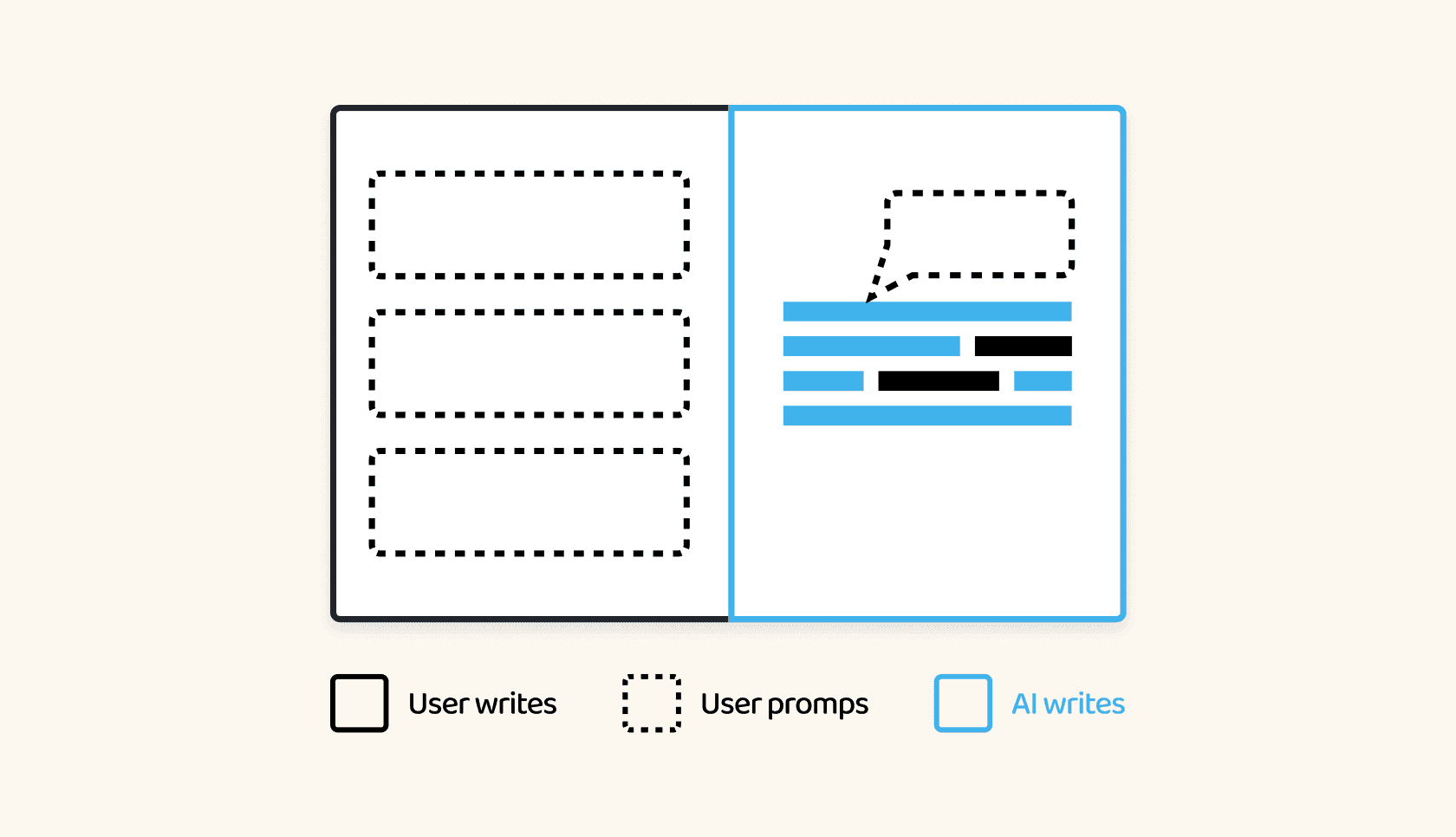Co-writing with AI
Jul 8, 2024 · 3min

Roksana
Designing Prompt Studio
Generative AI has transformed the way we create content
As technology becomes more available, the focus shifts from its technical capabilities to the user experience it provides. This is the case with generative AI, which has matured to a point where the design of the user experience is key to its value. Every day, new AI tools emerge, each exploring the still forming principles of user-AI interaction and offering unique features with varying degrees of success. These developments all add to our understanding and help shape design theory in this domain. Let’s look at Prompt Studio as one of those examples and discuss how our approach to designing an AI writing tool may contribute to this research.
UI shift in AI writing tools
With the advancement of generative AI and Large Language Models (LLMs), AI writing tools have improved significantly, transforming how content is created, not just by writers. AI writing assistants vary in their level of agency; some offer help by providing suggestions and enhancements, while others can take over the writing process, leaving humans to focus on editing and adding personal touch.
Traditional writing tools mirrored a one-page writing style. But now, AI-supported text editors demand novel types of interactions, where the text is fragmented into highlights, cards, prompt boxes etc. This fragmentation allows for dynamic interaction with text, such as adding, moving, or combining pieces. These insights come from a paper where the author introduces the concept of collage in AI writing tool design. Such UI design involves:
- working with text in a form of fragments
- working with two voices, where one is the actual content and the other is a prompt to generate it
- using and remixing material from multiple sources, such as text written by the user or text generated by AI
The interaction between user and AI proposed in Prompt Studio can be understood through this concept.
Text fragmentation in Prompt Studio
In the process of designing Prompt Studio, we faced a number of challenges. Our analysis of existing AI writing tools in the market showed an uneven agency over the content given to the user and the AI. Often, the AI has too much control, leading to generic and low-quality content, which doesn't fully demonstrate capabilities of AI-assisted writing. Also, users frequently struggle to seamlessly alternate between AI-generated content and manual typing, usually having to rely on different tools to meet their needs.
Throughout our research, design, and testing phases, we aimed to address specific user needs:
- Transitioning between AI-generated content and manual typing should be effortless and intuitive.
- Both manual typing and AI-generated text should be equally valued
- The user should maintain a sense of ownership and influence over their content.
- The design must facilitate easy revisions of AI-generated output to ensure high-quality results.
- The interface should clearly differentiate between three types of text: user-written content, AI-generated content, and user-written prompts, all of which should integrate smoothly.
The layout of different fragments in the Prompt Studio interface is shown above. Fragments can be differentiated between the voice&source: user-written content, user-created prompts, and AI-generated content. We're planning to expand this by adding a source where the AI will provide the user with suggestions and improvements (AI prompting the user), thus covering the range of user-AI exchanges in writing applications.
The development of this layout took several months, involving extensive research with professional copywriters and testing of prototypes, and it is indeed still ongoing. The story of how we reached this stage is very interesting, and I will try to cover this process in another post.
